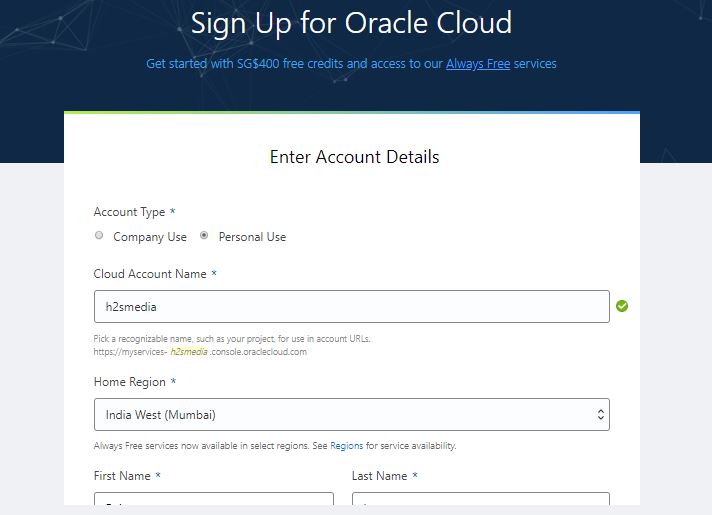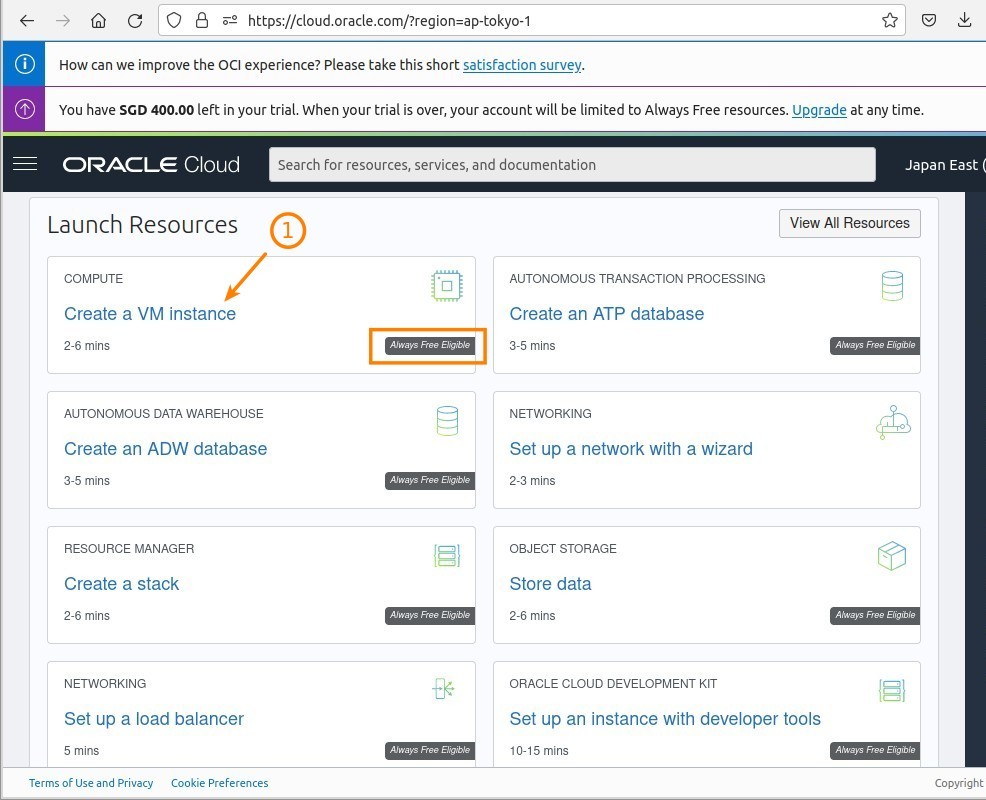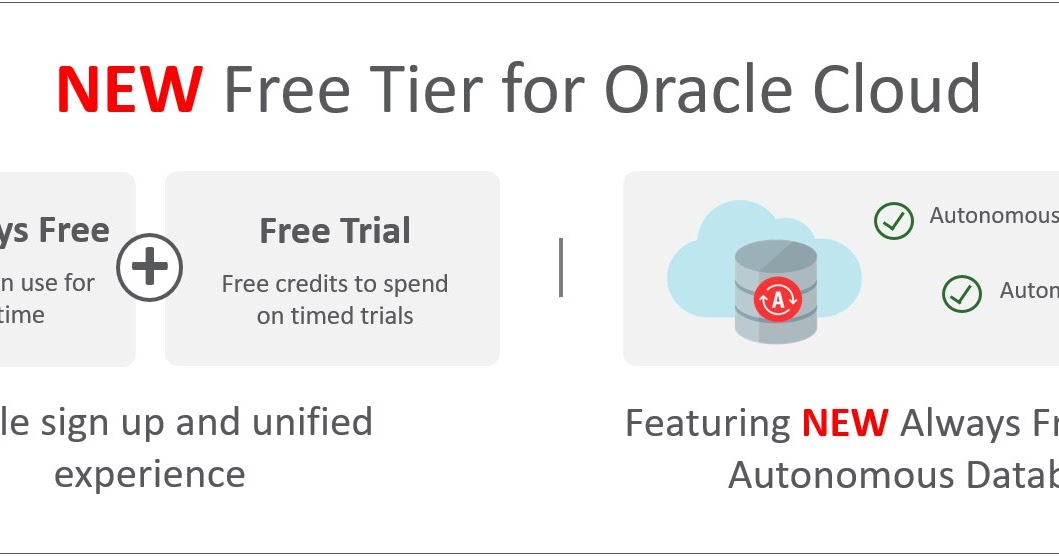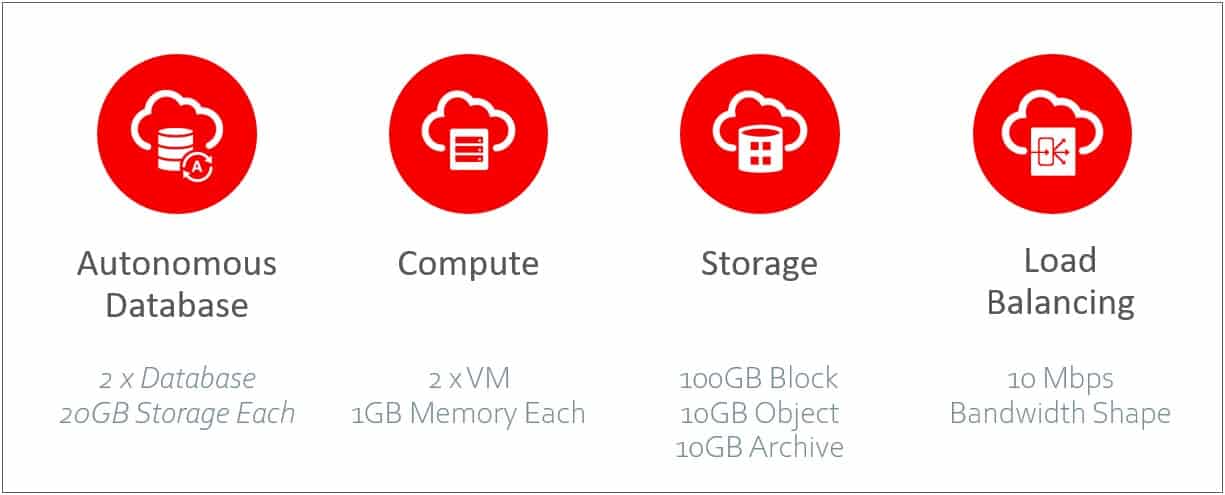Introduction to Oracle Always Free
Oracle Always Free is a cloud-based offering that provides users with free access to a wide range of services and resources. This initiative is designed to help developers, students, and small businesses experiment, learn, and build applications without incurring any costs. The Oracle Always Free program includes a variety of services such as Autonomous Database, Compute, and Storage, enabling users to take advantage of the powerful Oracle Cloud platform at no charge.
Understanding the Oracle Always Free Offerings
Oracle Always Free provides users with access to a variety of cloud services at no cost. The main offerings include Autonomous Database, Compute, and Storage. Each of these services comes with specific features and limitations that users should be aware of.
Autonomous Database
Oracle Autonomous Database is a fully managed database service that uses machine learning to automate tasks such as patching, backups, and performance tuning. The Always Free tier offers a small-scale version of this service, which includes 20 GB of storage and allows for up to 5,000 transactions per month. This service is ideal for learning new database technologies, prototyping, and small-scale projects.
Compute
Oracle Compute is a service that allows users to provision and manage compute resources in the cloud. The Always Free tier includes two compute instances, each with 1 OCPU and 1 GB of memory. These instances can be used for running applications, testing environments, and development work. Note that the Always Free compute instances do not offer load balancing or automatic scaling features.
Storage
Oracle Always Free includes 200 GB of object storage, which can be used for storing and accessing data in the cloud. This service is suitable for storing backups, static assets, and other types of data that do not require low-latency access. Keep in mind that the Always Free storage service does not include features such as data lifecycle management or data protection policies.
Limitations
While Oracle Always Free offers a wide range of cloud services at no cost, there are some limitations to be aware of. For instance, the Always Free services are not intended for production workloads, and users may experience limitations in terms of performance, availability, and support. Additionally, the Always Free services are subject to change, and Oracle may discontinue or modify these offerings at any time.
How to Get Started with Oracle Always Free
Getting started with Oracle Always Free is a straightforward process. Follow these steps to create an account, select your desired services, and set up your environment:
Step 1: Create an Oracle Cloud Account
To start, navigate to the Oracle Cloud website and click on the “Get Started for Free” button. Fill out the registration form with your details, including your name, email address, and password. After submitting the form, you will receive a confirmation email with a link to activate your account.
Step 2: Select Your Desired Services
Once your account is active, log in and navigate to the Oracle Cloud Marketplace. From there, you can browse the available services and select the ones you want to use. Remember that the Always Free tier includes Autonomous Database, Compute, and Storage services.
Step 3: Set Up Your Environment
After selecting your services, you can start setting up your environment. This process will vary depending on the services you have chosen, but in general, you will need to create resources, configure settings, and define access controls. Oracle provides detailed documentation and tutorials to help you through this process.
Step 4: Verify Your Usage
Once your environment is set up, make sure to monitor your usage to ensure that you stay within the limits of the Always Free tier. Oracle provides tools and alerts to help you manage your usage and avoid exceeding your free quota.
Exploring Use Cases for Oracle Always Free
Oracle Always Free offers a wide range of possibilities for users, from learning new technologies to testing and development, and even small-scale projects. Here are some real-world examples and success stories to inspire you:
Learning New Technologies
Oracle Always Free is an excellent resource for developers who want to learn new technologies without incurring any costs. For instance, you can use the Autonomous Database service to learn about database administration, SQL, and PL/SQL programming. Additionally, you can use the Compute service to explore different operating systems, containers, and serverless functions.
Testing and Development
Oracle Always Free is also suitable for testing and development purposes. You can use the Always Free services to build and test applications, prototypes, and proofs of concept. Moreover, you can use the Storage service to store and manage your data, assets, and backups. This way, you can ensure that your applications and services are reliable, secure, and scalable.
Small-Scale Projects
Oracle Always Free is ideal for small-scale projects that do not require high-performance or high-availability resources. For example, you can use the Always Free services to build and deploy websites, blogs, forums, and other types of content management systems. Additionally, you can use the Always Free services to create and manage chatbots, virtual assistants, and other types of conversational interfaces.
Real-World Examples and Success Stories
Many developers and organizations have already taken advantage of Oracle Always Free to build and deploy innovative applications and services. For instance, the Oracle Always Free Autonomous Database has been used to build a real-time fraud detection system, a machine learning platform, and a data analytics dashboard. Additionally, the Oracle Always Free Compute service has been used to build a serverless microservices architecture, a container orchestration platform, and a blockchain network.
Maximizing Your Experience with Oracle Always Free
To get the most out of Oracle Always Free, consider these tips and best practices for optimizing resource usage, monitoring performance, and engaging with the Oracle community:
Optimizing Resource Usage
Oracle Always Free offers a limited amount of resources, so it’s essential to use them wisely. Here are some ways to optimize your resource usage:
- Use the smallest instance size that meets your needs.
- Delete unused resources, such as compute instances, storage volumes, and object storage buckets.
- Schedule your resources to turn off during non-business hours.
- Use caching and content delivery networks to reduce the load on your resources.
Monitoring Performance
Monitoring the performance of your Oracle Always Free resources is crucial for ensuring that they are running smoothly. Here are some tools and techniques for monitoring performance:
- Use the Oracle Cloud Infrastructure Console to view metrics, alarms, and events for your resources.
- Use the Oracle Cloud Infrastructure SDKs and APIs to programmatically retrieve metrics and alarms for your resources.
- Use third-party monitoring tools, such as Nagios, Zabbix, or Prometheus, to monitor your resources from a single dashboard.
Engaging with the Oracle Community
The Oracle community is a valuable resource for learning, networking, and getting support. Here are some ways to engage with the Oracle community:
- Join the Oracle Developer Community, a social platform for developers to share knowledge, ask questions, and collaborate on projects.
- Attend Oracle events, such as OpenWorld, Code One, or LiveLabs, to learn about new technologies, meet experts, and network with peers.
- Follow Oracle blogs, podcasts, and social media channels to stay up-to-date on the latest news and trends.
Comparing Oracle Always Free to Other Free Tier Offerings
Oracle Always Free is not the only cloud provider that offers a free tier. Here’s how it compares to similar free tier offerings from other cloud providers:
Amazon Web Services (AWS)
AWS offers a free tier that includes 750 hours of EC2 and RDS t2.micro instances, 5 GB of S3 storage, and 250,000 AWS Lambda requests per month. While AWS offers more services than Oracle Always Free, its free tier is more limited in terms of resources and duration.
Microsoft Azure
Azure offers a free tier that includes 750 hours of B1S virtual machines, 5 GB of storage, and 250,000 outbound data transfers per month. Azure’s free tier is similar to Oracle Always Free in terms of resources and duration, but it offers fewer services and features.
Google Cloud Platform (GCP)
GCP offers a free tier that includes 25 GB of storage, 5 GB of egress data per month, and $300 in credits for 90 days. GCP’s free tier is more generous than Oracle Always Free in terms of credits and duration, but it offers fewer services and features.
Comparing Features and Advantages
While all cloud providers offer a free tier, Oracle Always Free stands out in several ways. Here are some unique features and advantages of Oracle Always Free:
- Oracle Always Free offers a wider range of services than other cloud providers, including Autonomous Database, Compute, and Storage.
- Oracle Always Free offers more resources than other cloud providers, including 20 GB of block storage and 10 GB of object storage.
- Oracle Always Free offers a longer duration than other cloud providers, with no time limit or expiration date.
- Oracle Always Free offers a more seamless and integrated experience than other cloud providers, with a unified console, API, and CLI.
Oracle Always Free: Frequently Asked Questions
Oracle Always Free is a powerful and generous offering, but it also raises some questions and concerns. Here are some frequently asked questions and their answers:
What are the limitations of Oracle Always Free?
Oracle Always Free has some limitations, such as the number of OCPUs, the amount of memory, and the amount of storage. However, these limitations are designed to prevent abuse and ensure fair use. Moreover, Oracle Always Free offers a wide range of services and resources that are sufficient for learning, testing, and small-scale projects.
Is Oracle Always Free secure?
Yes, Oracle Always Free is secure. Oracle uses industry-standard security measures, such as encryption, access control, and monitoring, to protect your data and resources. Moreover, Oracle Always Free offers a dedicated security console, where you can view and manage your security settings and alerts.
Can I scale Oracle Always Free?
No, Oracle Always Free does not support scaling. If you need more resources or services, you can upgrade to a paid plan or use Oracle Cloud Infrastructure Classic, which offers more flexible and scalable options.
Is Oracle Always Free viable for long-term use?
Oracle Always Free is not designed for long-term use or production workloads. However, it is an excellent platform for learning, testing, and experimenting with new technologies and ideas. If you outgrow Oracle Always Free, you can upgrade to a paid plan or use Oracle Cloud Infrastructure Classic.
How does Oracle Always Free compare to other cloud providers?
Oracle Always Free offers a wider range of services and resources than other cloud providers, such as AWS, Azure, and GCP. Moreover, Oracle Always Free has fewer limitations and restrictions, and it is more generous in terms of duration and credits. However, other cloud providers may offer more features, integrations, and support for specific use cases and workloads.
Conclusion: Embracing the Future with Oracle Always Free
Oracle Always Free is a game-changing initiative that provides users with free access to cloud services and resources. With Oracle Always Free, you can learn new technologies, test and develop applications, and run small-scale projects without incurring any costs. Moreover, Oracle Always Free offers a wide range of services, such as Autonomous Database, Compute, and Storage, and a seamless and integrated experience.
To get started with Oracle Always Free, simply sign up for an account, select the desired services, and set up the environment. Then, explore the potential use cases, such as learning new technologies, testing and development, and small-scale projects, and engage with the Oracle community to optimize your experience and stay up-to-date with the latest news and trends.
Compared to other free tier offerings from cloud providers, Oracle Always Free stands out with its unique features, advantages, and disadvantages. However, Oracle Always Free is not designed for long-term use or production workloads. Instead, it is an excellent platform for learning, testing, and experimenting with new technologies and ideas.
In conclusion, Oracle Always Free is a valuable and generous offering that empowers users to embrace the future of cloud computing. By taking advantage of Oracle Always Free, you can unlock the potential of cloud services and resources, and accelerate your digital transformation journey.








